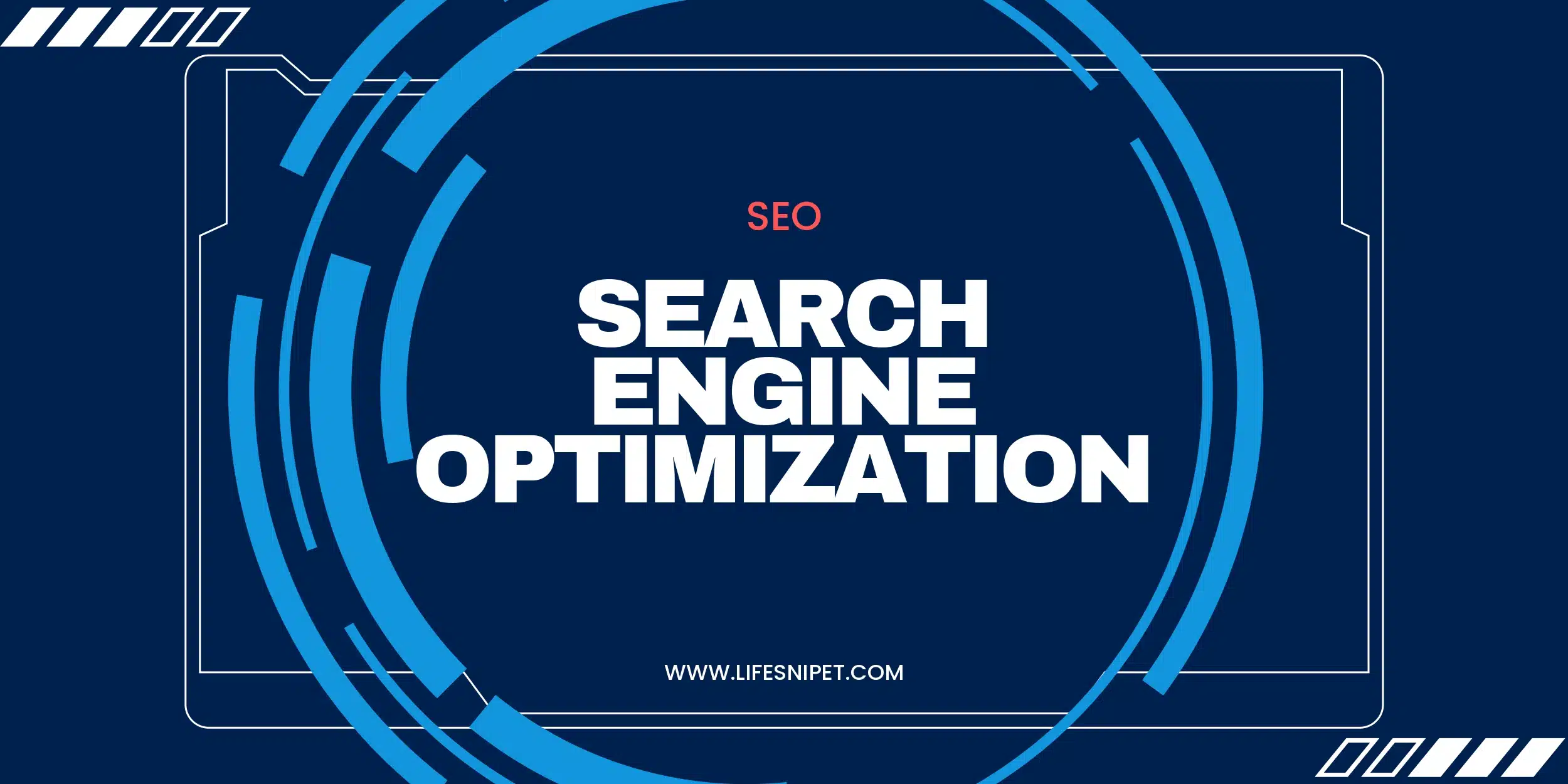The rise of Magento has changed the dynamic e-commerce industry. Since its release in 2008, Magento has become one of the most popular online business platforms for businesses and retailers worldwide. Migrate From Magento 1 and Magento development services were a staggering accomplishment, however as development propels, so does our product.
This is where Magento 2 comes in—it has great new features and functionality that have been improved. Therefore, why should you migrate from Magento 1 and upgrade to Magento 2? The primary advantages of switching will be discussed in this article.
You can explore the new features added by migrating to Magento 2, such as improved mobile support, enhanced security, and performance and scalability.
Also, you’ll have the option to encounter the advantage of smoothed-out checkout processes, work on happy and item lists, and improve marketing abilities. Eventually, Magento 2 will work on your e-commerce store’s general performance and client experience.
Magento 2 additionally gives you useful tools for customization. With the presentation of current technologies such as HTML5, CSS3, and PHP 7, you have greater control over how your store looks and functions.
From broad subject choices to basic customizations, Magento 2 permits you to alter your store precisely how you need it. Moreover, Magento e-commerce web development makes it simple to design different stores from a similar platform, which can assist you with growing your reach across multiple platforms.
Finally, migrating to Magento 2 will ensure you’re up-to-date with the latest software version and stay ahead of competitors. As technology propels, so does Magento, making it fundamental for organizations to stay aware of the most recent features and usefulness.
What is Magento?
Magento is an open-source e-commerce platform, written in PHP and because of the Zend System, made by Varien. It is one of the world’s most well-known e-commerce platforms, controlling more than 250,000 online stores. Merchants can take advantage of various features provided by Magento, such as order management, mobile commerce capabilities, payment gateway integration, and product catalogs.
Magento is an open-source eCommerce platform that has been around for more than 10 years. It is one of the most well-known platforms utilized by organizations to make online stores and deal clients a drawing in shopping experience. With its natural UI, strong features, and adaptability, Magento makes it simple for organizations to set up their digital store.
Magento offers organizations comprehensive devices to oversee and scale their e-commerce stores. It gives a variety of features that can be utilized to make a novel shopping experience for clients, including product catalogs, payment gateways, shipping methods, and marketing tools. Moreover, it is highly secure and compliant with industry standards.
What is Magneto 2?
Magento 2 is the next generation of the popular e-commerce platform, Magento. It is a finished rewrite of the first Magento 1 codebase and offers further developed performance, scalability, and security for online stores. Migrate from Magento 1 gives more productive performance and quicker stacking times because of modern modular architecture that allows for easier customization.
Besides, it has different new features, for instance, top-to-bottom investigation, high-level inquiry capacities, upgraded product and content administration, and then some more. Businesses looking to create a cutting-edge, user-friendly online store should consider Magento 2.
Magento e-commerce development services likewise accompany a scope of powerful tools to help merchants customize their stores. It includes modern technologies such as HTML5, CSS3, and PHP 7, which allow for greater control over the look and feel of your store. With a variety of themes and customization choices available, making a novel online presence for your business is simple. Moreover, different stores can be overseen from a similar platform, permitting organizations to extend their reach.
Migrate from Magento 1 to 2 is the latest version of the popular open-source eCommerce platform. It was released in 2015 and carries a large group of new features and upgrades over its ancestor, Magento 1.
The new variant of Magento is intended to be quicker, more solid, and simpler to use than its ancestor. It offers organizations the capacity to create engaging customer experiences with a wide range of features such as advanced search, product comparison, one-step checkout, and integrated payment gateways.
Besides, Magento 2 is safer and more secure than ever with its improved security features and support for the latest technologies. This makes it an ideal decision for organizations that are searching for a secure and reliable eCommerce platform to drive their online stores.
Benefits of Upgrading to Magento 2
1. Improved performance:
Migrate from Magento 1 offers better performance than its predecessor. This includes faster page loading, lower latency, and better scalability for larger stores. It also offers improved caching functions that further increase performance.
2. Enhanced security features:
Magento 2 includes several security upgrades that make it more secure than Magento 1. Migrate from Magento 1 includes better encryption methods, autocorrect, and two-factor authentication. This ensures that data is stored securely and customer information remains protected.
3. Responsive design:
Magento 2 incorporates responsive plan components that make it simple to make a site that looks great on any device. The overall user experience is enhanced by the use of mobile-friendly templates, optimized images, and more intuitive navigation.
4. Simplified checkout:
Customers can complete their purchases more quickly and easily with Magento 2’s simplified checkout process. Migrate from Magento 1 includes guest checkout options, pre-filled forms, and a one-page checkout. Customers no longer have to enter their information multiple times when placing orders as a result of this.
5. Improved search function:
Magento 2 has further developed search works that make it simpler for clients to find the items they are searching for. Magento 1 to Magento 2 migration service incorporates better auto-fill capabilities, further developed query items, and more exact arranging choices.
6. Flexible product display:
Magento 2 has flexible product display options that allow the store operator to customize the display of products on their website. Migrate from Magento 1 includes the ability to add image galleries, video content, and more.
7. Better scalability:
Since Magento 2 is more scalable than its predecessor, store owners can handle higher traffic and sales volumes. It likewise offers better reconciliation with third-party services, like payment gateways and shipping providers. Magento e-commerce solutions make it simpler for storekeepers to grow their business without investing extra equipment or software.
8. SEO-friendly:
Magento 2 includes several features that make it easier for store operators to optimize their websites for search engine visibility. Migrating from Magento 1 includes optimized URLs, meta tags, and sitemaps that can improve rankings in the major search engines. In addition, it offers the ability to customize product descriptions and page titles to boost SEO efforts further.
9. Improved administration:
The new administration interface in Magento 2 makes it simpler for store managers to manage their stores. Migrate from Magento 1 includes a better dashboard, better reporting tools that make it easier to monitor sales performance and orders, and navigation that is easier to understand. Likewise, the capacity to make custom perspectives and deal with different stores from one focal connection point makes dealing with a business significantly more productive.
10. Improved process:
Customers will find it much simpler to make purchases from your store thanks to Magento 2’s optimized checkout procedure. This includes the ability to save payment information for future purchases, guest checkout, and simpler payment options.
11. Increased productivity:
Magento 2 offers more flexibility in managing products and orders. With the improved administration interface, store owners can quickly find information and make changes, speeding up the management of their store.
12. Improved SEO:
There are several SEO optimizations built into Magento 2 that contribute to higher search engine rankings. Improved metadata support, an improved URL structure, optimized HTML and CSS code, and other features that can boost your visibility in search results are among these.
What is the most important difference between Magento 1 and Magento 2?
1. Architecture:
Magento 2 depends on a refreshed and further developed structure that empowers more prominent adaptability, adaptability, and execution contrasted with after migrate from Magento 1.
2. Performance:
Magento 2 proposes Full-Page Caching (FPC) to further develop page load times and speed up the site. It also works with Varnish and other caching technologies, which makes it faster.
3. Usability:
Improved usability features in Magento 2 include faster checkout, improved navigation menus, and AJAX add-to-cart functionality. This makes it simpler for clients to browse and buy things from your store.
4. Security:
Migrate from Magento 1 and jumping to Magento 2 incorporates upgraded safety efforts to safeguard storekeepers and their clients. Advanced encryption algorithms, improved management of passwords, and the capacity to identify malicious code are among these.
5. SEO:
Improved SEO features like optimized URLs, meta tags, and sitemaps make Magento 2 more visible in search results. Migrate from Magento 1 also lets you change page titles and product descriptions to make your website even better.
6. Flexibility:
With features like improved inventory management and customizable product attributes, Magento 2 provides more flexibility for managing products and orders. Store owners can more easily tailor their offerings to meet the ever-evolving needs of their customers thanks to this.
7. Optimisation for Mobile:
From the beginning, Magento 2 was made to be mobile-friendly. Migrate from Magento 1 has improved responsiveness and a simplified checkout process that makes shopping on mobile devices easier.
8. Customization:
Magento 2 permits storekeepers to make custom subjects and expansions that can be utilized to redo the look, feel, and usefulness of their stores. This makes it simpler for organizations to make special shopping encounters that stand apart from the opposition.
9. Support:
Magento offers an extensive variety of help choices for storekeepers, including committed client support lines, online assets, and local area discussions. When problems arise, this makes it simpler for store owners to get assistance quickly.
10. Analytics of data:
After migrate from Magento 1, an improved analytics dashboard in Magento 2 makes it possible for store owners to monitor important metrics like conversion rate, average order value, and customer lifetime value. Businesses can more easily identify areas for improvement and take advantage of growth opportunities as a result of this.
11. Automation:
Magento 2 offers instruments that robotize manual undertakings, for example, item updates and stock administration. As a result, store owners can focus more on other important aspects of their business while spending less time and effort on routine tasks.
How Does Magento 2 Improve Security?
Magento 2 is a complete e-commerce stage intended to further develop convenience, increment security, and smooth out the method involved with running an e-commerce store. Easy installation, integration with third-party services, robust APIs, and improved website performance are among the platform’s features after migrate from Magento 1.
Several security features in Magento 2 shield customers and merchants from malicious attacks.
Some of these features are:
- Encryption algorithms that safeguard customer data while it is in transit and at rest – Improved management of passwords by adding additional security criteria to passwords
- The capacity to detect malicious code, such as cross-site scripting (XSS) and SQL injection attacks – User roles and privileges that can be assigned to various employees to control access to sensitive information
- Two-factor validation to shield client accounts from unapproved access.
- Safe storage of payment information for customers.
- PCI consistency apparatuses guarantee that dealers meet the prerequisites of the Installment Card Industry Information Security Standard (PCI-DSS).
By and large, migrate from Magento 1 to Magento 2 offers a far-reaching set of safety highlights intended to protect the two shippers and clients. With these features, businesses can be sure their operations are safe and protect the information of their customers.
What is the migration process from Magento 1 to Magento 2?
The process of migrating from Magento 1 to Magento 2 is a complex and extended process that requires cautious preparation. The migration of data, customizations, extensions, and themes are just a few of the steps in the process. It is essential to understand the distinctions between the two platforms before setting out on the migration.
1. Back up your Magento 1 store:
If any data is lost during the process, you should create a backup of your Magento 1 store before beginning any upgrades or migrations. If something goes wrong, you can easily migrate from the Magento 1 version.
2. Make a migration plan:
You should make a plan with all the steps and tasks that need to be done before you start the migration. This will assist with guaranteeing a smooth change from Magento 1 to Magento 2.
3. Data movement:
The following step is to migrate from Magento 1 to Magento 2. An automated tool like the Magento Data Migration Tool can be used to accomplish this. You can transfer all important data from one platform to another using this tool, including orders, customers, and products.
4. Adjustments:
All modifications made to the Magento 1 store must be transferred to the Magento 2 store after the data has been migrated. All modifications to core files, extensions, and themes are included in this. This procedure may take some time, depending on how complicated the customizations are.
5. Add new features:
Third-party extensions utilized in the migration from the Magento 1 store should be refreshed to be viable with Magento 2. This is critical because, following the migration, some extensions might no longer function as intended, which could harm your store.
6. Testing:
It is now time to test the new Magento 2 store after all the steps have been completed. This includes testing the checkout, payment processing, shipping options, and other features of the website. This will assist you with recognizing any issues before you go live with the new store.
7. Startup:
After all that has been tried and is working appropriately, now is the right time to go live with your new Magento 2 store. Ensure you illuminate your clients about the platform change and give them all the fundamental data they should have the option to utilize the new store.
8. Monitor:
It is essential to monitor your new store and look out for potential issues even after it goes live. This way you can guarantee that everything chugs along as expected and that clients can utilize the store with no issues.
9. Security:
Magento 2 has an assortment of inherent security highlights to safeguard the two vendors and clients. Two-factor authentication, secure payment gateways, and data encryption are just a few examples. This guarantees that your store runs safely and that client information is constantly secured.
10. Developer-friendly:
The developer community for Magento 2 is large, and the platform was designed to be as user-friendly as possible for developers. Migrating from Magento 1 makes it simpler for developers to modify and expand the functionality of the store, which can assist in enhancing the customer experience and driving up sales.
11. Scalability:
Magento 2’s scalability means that it can handle more customers and orders without causing performance issues. If your store anticipates an increase in orders as a result of a promotion or seasonal sale, this can be especially helpful.
12. Frameworks for hybrid mobile development:
Popular hybrid mobile development frameworks like Ionic and PhoneGap can be incorporated into Magento 2. Migrate from Magento 1 makes it easier for customers to shop from their mobile devices by allowing developers to create mobile apps for their store that can be used on both iOS and Android devices.
What are the Costs Associated with Migrating from Magento 1 to Magento 2?
Since after migrating from Magento 1, Magento 2 offers a more secure and feature-rich environment for eCommerce development, migrating from Magento 1 to the platform is essential for any company. However, migration can be costly on its own. The costs of migrating to Magento 2 in the past and now are discussed in this article.
Past Expenses
At the point when Magento launched its most memorable form, migrating from Magento 1 to Magento 2 was a straightforward interaction that could be finished somewhat rapidly. However, as the platform has developed over time, the migration cost has skyrocketed.
Before, organizations needed to put resources into custom turn of events and expansion moves up to guarantee their site was viable with the new variant. This could cost somewhere in the range of $500 to $2,000 depending upon the intricacy of the Magento 1 store.
For any organization using the platform, overhauling from Magento 1 to Magento 2 is basic since it offers an additional element-rich and secure climate for e-commerce business development. The migration itself, on the other hand, can be costly. The costs of moving to Magento 2 in the past and now are discussed.
Current Expense
Up to this point, migrating to Magento 2 has been a costly endeavor. Depending on the size and complexity of your current website, the cost can range anywhere from $2,000 to $30,000. This covers the cost of any custom development and compatibility-related third-party extensions that are required.
In addition, many businesses select to pay an additional $200 per hour for the assistance of a Magento-certified developer during the migration process.
When preparing to switch from Magento 1 to Magento 2, businesses should ensure that they are fully aware of the costs. In addition to the cost of custom development and extension upgrades, hiring a professional developer to assist may result in additional expenditures. Besides, after the relocation is done, organizations ought to ponder any expected long-haul maintenance or backing costs.
What Type of Services Can Help With a Magento Migration Project?
1. Services for migrating Magento:
With their diverse set of skills and services, Magento migration experts make it easier to move from one platform to another, such as consolidating a specific e-commerce site on a Magento platform. Custom code development, data transfer, and database migration are examples of such services.
2. Support for IT Infrastructure:
A specialized undertaking needs unambiguous information to make a framework for the e-commerce store. IT infrastructure consultants with expertise in software development, security, and hosting can provide your project with the necessary technical support.
3. Third-party extensions Overhauls:
A migration specialist can help with how to upgrade these extensions and even identify any issues with them with this position. As a result, third-party extensions might need to be updated to keep up with the latest version of Magento because the platform is constantly changing.
4. UX and design services:
An effective e-commerce webpage requires the best plan and client experience. A modern, visually appealing store that engages customers and encourages them to complete their purchases can be created with the assistance of experts in web design and user interface.
5. Services for Professional Development:
Magento’s foundation is perplexing and requires master information on the stage’s different APIs, dialects, and systems. Services for professional development can help make sure your store is built to the highest possible standards.
6. Quality Confirmation:
Any software project needs quality assurance, and a migration project is no exception. Any potential issues can be identified and fixed with QA services before they become major issues.
7. Support Administrations:
After a successful migration, it may be necessary to provide ongoing support to ensure that the store runs smoothly and that any technical issues are resolved. With help administrations, you can experience the harmony of psyche realizing that your store is safe and sound.
8. Development Services:
An e-commerce store requires continuous preparation and improvement for it to perform well. Professional training services can help make sure that everyone on your team knows how to manage and make your store work best.
9. Frameworks for Hybrid Mobile Development:
Businesses should think about developing their eCommerce store as a hybrid mobile application to reach as many people as possible. Ionic, React Native, and Apache Cordova are just a few of the many frameworks available for this kind of development.
10. Services in SEO:
For any e-commerce store to be successful, it is essential to have an efficient search engine optimization strategy. Businesses can get professional SEO services to help them find the best keywords and phrases to target and make sure their websites are optimized for maximum search engine visibility.
11. Content Promoting Services:
Because it enables businesses to engage with customers and increase brand awareness, content marketing is an essential component of any digital marketing strategy. Businesses can use professional content marketing services to create high-quality content that is search engine optimized and appealing to customers.
12. Services for Analytics:
Understanding customer behavior and maximizing the store’s performance necessitates data analysis. Proficient examination administrations can assist organizations with getting a superior comprehension of their clients and how their store is performing, so they can pursue informed choices.
Conclusion
For more than a decade, Magento 1 has been the most widely used platform in the eCommerce sector. Migrate from Magento 1 has empowered organizations to rapidly and effectively open internet-based stores with every one of the essential highlights, including item lists, shopping baskets, and installment passages, and that’s just the beginning.
However, there have been significant changes in recent years that warrant considering a switch from Magento 1 to Magento 2. Magento 2 offers further developed execution, new highlights and instruments, and more prominent adaptability. Moreover, the stage makes it simpler to deal with various stores from a solitary dashboard, which can set aside organization time and cash.
Additionally, businesses can gain access to a wide range of third-party extension upgrades by migrating to Magento 2. This permits them to handily add elements to their store that are not accessible in the first stage, for example, high-level examination and showcasing devices.
This large number of advantages makes migrate from Magento 1 to Magento 2 a convincing choice for organizations hoping to remain in front of their opposition. Nevertheless, it is essential to keep in mind that migrating is a complicated procedure that should not be attempted lightly. It necessitates a skilled developer with an in-depth comprehension of the platform’s architecture.
Before beginning the migration process, businesses should ensure that their data is safe and backed up. In addition, hire a Magento developer to help make the transition go as smoothly as possible and prevent any errors or issues. Lastly, they should test the new platform before making it available to the public.
Overall, businesses who want to take advantage of the platform’s improved performance, scalability, and new features should consider migrating from Magento 1 to Magento 2. To avoid any potential issues, however, it is essential to ensure that the migration procedure is carried out correctly. Businesses can easily and quickly switch from Magento 1 to Magento 2 with careful planning and expert assistance.
FAQ
Q1: What is Magento 2?
A1: Built on the PHP Zend framework, Magento 2 is an open-source eCommerce platform for marketplaces and online stores. It provides businesses with a comprehensive set of tools to control their online store’s content, functionality, and appearance.
Q2: How is Magento 2 different from Magento 1?
A2: In comparison to Magento 1, Magento 2 offers several enhancements, including enhanced performance and scalability, new tools and features, and the capability to manage multiple stores from a single dashboard. Furthermore, it furnishes organizations with admittance to outsider augmentations and devices that can be utilized to expand the stage’s abilities.
Q3: What are the benefits of migrating from Magento 1 to Magento 2?
A3: Businesses can gain access to a variety of brand-new tools and features, enhanced performance and scalability, and the capability to manage multiple stores from a single dashboard by migrating from Magento 1 to Magento 2. It additionally offers admittance to outsider augmentations broadening the stage’s abilities.
Q4: How long does it take to migrate from Magento 1 to Magento 2?
A4: The timeframe expected to finish the movement from Magento 1 to Magento 2 will rely upon the intricacy of your store and any extra customization that should be finished. Migrations typically last from a few days to several weeks.
Q5: What is involved in migrating from Magento 1 to Magento 2?
A5: Your store’s data, including products, categories, customer information, orders, and other related data, are transferred as part of the migration process. Customizing the new theme and any necessary plugins or extensions are also part of the process.
Q6: Is migrating from Magento 1 to Magento 2 a complex process?
A6: Relocating from Magento 1 to Magento 2 is a perplexing cycle that requires an accomplished designer and an exhaustive comprehension of the stage’s engineering. It is essential to guarantee that all information has been supported and gotten before beginning the relocation. In addition, businesses ought to think about hiring professional services to assist with the transition and steer clear of any potential blunders or issues. Businesses can launch the new Magento 2 store once the new platform has been tested.
Q7: What should businesses consider before migrating from Magento 1 to Magento 2?
A7: Before moving from Magento 1 to Magento 2, organizations ought to guarantee that their information is supported and secure. In addition, it is essential to enlist the assistance of professional services for the transition and to contemplate testing the new platform before its launch. Moreover, organizations ought to have an arrangement set up for the relocation cycle and know about any possible issues or mistakes that could happen.

Welcome to LifeSnipet! At LifeSnipet, we’re your ultimate source for the latest health updates. Specializing in health and fitness-related diseases, we delve deep into Ayurvedic techniques, providing you with a comprehensive understanding of well-being. Explore our real-time updates, detailed articles, and ancient Ayurvedic wisdom for a holistic approach to health. Embark on a journey to a healthier, vibrant life with LifeSnipet – where your well-being is our priority!











